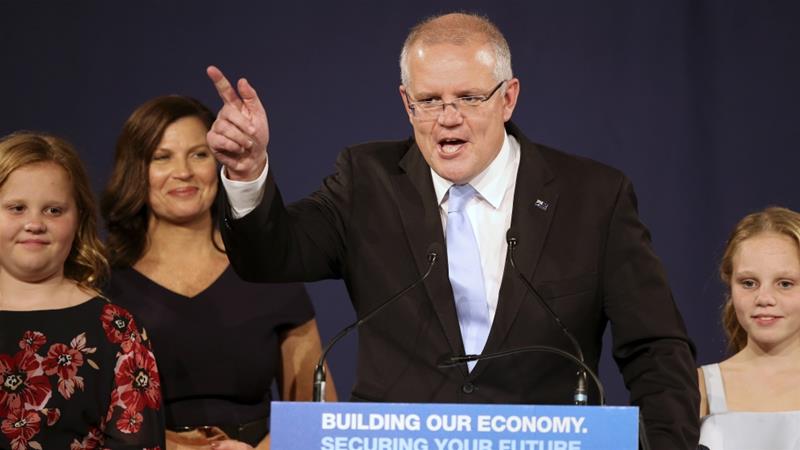The defeat of Labor was not widely expected in Australia.
Scott Morrison led the Liberals to a largely unanticipated electoral victory.
This will mean that as PM in which he clearly led the coalition to victory he will have more authority initially than might be normal in the Aussie context.
The Chinese were clearly hoping that the Liberals would loose but in any case the Chinese-Australian relationship is a key one to be dealt with by the new government, on economic, security, defense and cultural grounds.
Defense policy should see signifiant continuity although the retirement of Chris Payne brings a new defense minister to office. Linda Reynolds is from Western Australia and given the need to reconsider Australian geography within the context of India-Pacific defense perhaps she is well placed to rework the appraoch for the Northern Territories and Western Australia. She certainly should be open to the ship building initiatives launched by Payne in the last govenrment.
She comes to the job with nearly thirty years of involvement in the Australian Army reserves as well.
Linda Reynolds served in the Army Reserves for 29 years (1984-2012) in both part and full time positions. During this period she acted as an Officer Cadet, Regional Logistical Officer (Second Lieutenant to Caption), Training Development Officer (Captain), Commanding Officer 5th Combat Support Battalion (Lieutenant Colonel), Military Instructor at the Army Command and Staff College (Lieutenant Colonel), Senior Career Manager (Lieutenant Colonel) and the Director of Active Standby Staff Group (Colonel).
Reynolds went on to become the adjutant general in the Australian Army Reserve as a brigadier, where she was awarded the Conspicuous Service Cross in the 2011 Australia Day Honours for “outstanding achievement as the Director of Army Strategic Reform Program coordination”.On attaining the rank of brigadier in 2012, Reynolds became the first woman in the Australian Army Reserve to be promoted to a star rank.
An article by Stephen Kuper in Defence Connect published on May 29, 2019 provided some initial insight with regard to the potential impact o the new government on defense.
While Australia’s defence expenditure looks set to increase to $38.7 billion in 2019-20, it is a case of business as usual for defence and industry, with the Coalition’s budget announcement signalling the government’s continued commitment to supporting the capability and development of Australia’s sovereign defence industry capabilities.
The Coalition remains committed to continuing the delivery of a number of key projects identified as part of the government’s 2016 Defence White Paper, which focused on delivering a series of major capability upgrades and modernisation programs across the Australian Defence Force, including:
- The delivery of the first unit as part of the $5.2 billion LAND 400 Phase 2 Boxer Combat Reconnaissance Vehicles;
- Industry partners presented their bids as part of the $10-15 billion LAND 400 Phase 3 Armoured Fighting Vehicle program;
- Construction progress for the $35 billion SEA 5000 Hunter Class guided missile frigate program;
- Construction commencement and milestones at the $535 million SEA 5000 Shipyard facility at Osborne, South Australia;
- The continued arrival of Australia’s Lockheed Martin F-35A Joint Strike Fighters; and
- The $50 billion SEA 1000 Attack Class future submarine program.
The government has confirmed over the next decade to 2028-29 the government will invest more than $200 billion in defence capabilities, including:
- The continuous naval shipbuilding program, which is investing around $90 billion to build world-class vessels, while also building a strong and viable Australian naval shipbuilding industry;
- Supporting the acquisition of 30 new self-propelled howitzers for the Australian Army – to be built and maintained at a purpose-built facility in Geelong;
- Building three new naval surface ships to be built at the Australian Marine Complex at Henderson, WA.
- Continuing to upgrade the EA-18G Growler electronic attack aircraft and E-7A Wedgetail battlespace management aircraft; and
- Building Australia’s policy and intelligence capabilities to ensure Australia has a deeper understanding of the changing geo-political environment.
For the full article, see the following:


